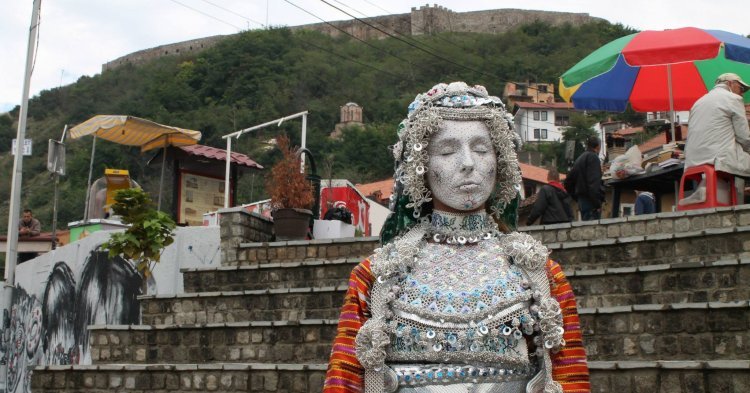The European Commission wants to set an example for Europe by announcing the central theme of 2018: culture gains a new status and is put into an European context, thus contributing to a more inclusive, innovative and long-term democratic development. This can also be seen as a final call for Europe. The value of cultural heritage has to become visible through our zeitgeist. Cultural heritage has the right to appear on the European stage. It ought to be understood as a chance for social and economic change for the future.
Paying attention to cultural heritage is of great importance because it is often reduced to buildings and history and bears a dusty image. The year of cultural heritage offers us, the European citizens, an opportunity to discover cultural heritage and participate actively on our owns. Every citizen of Europe grew up with cultural heritage. It surrounds us in a material, spiritual, natural and digital form. The EU herself has to communicate that regional, national and international players have to work together in order to realize the project of a European identity.
Starting out with a quarrel, we can build a bridge between cultural heritage and current trends like digitalization, globalization and innovation. Restoring a building is one thing but integrating this process into the everyday-life of Europeans is another. New technologies make it possible to present regional cultural heritage on a global stage. Culture has to be conveyed as inclusive, innovative and interactive.
Cultural heritage should be communicated in a way which makes these qualities transparent for everyone. Europe’s cultural potential can only be used to its full extent when citizens, educational institutions, politics, science and economy work together. Also, it is important to receive an overview of cultural activities and untouched cultural potential in Europe. In the form of mapping, it could lead to enhancement of knowledge and convergence between European citizens, no matter which cultural affiliation they might own.
But there is the danger of misunderstanding this year’s topic as something of only temporary importance. Therefore, future investments have to be a regular feature of EU policies. An innovative and creative way of looking at European cultural heritage opens up new job opportunities and even reduces unemployment in some poorer countries of Europe. This finding is based on a study in the region of Halland in Sweden carried out by Christer Gustafsson and Jan Rosvall. Halland’s economy did not develop as well as other Swedish regions.
Between the years 1993 to 2003, a large-scale project with the aim to preserve cultural heritage was conducted. During the project, one-third of the construction workers in the region were trained in traditional construction techniques. At the same time the citizens, several public sectors, private firms, NGOs and scientist worked together very closely. The idea of innovative, creative and sustainable cultural heritage created new job opportunities, basic and further training was made available, and it led to a higher attractivity of the region, not to mention that it strengthened democratic structures.
The topic of 2018 raises some questions: how is European identity defined? Where does Europa start and where does it end? Is culture bound to borders or can it, instead, overcome them and even submit a contribution to European integration?
The EU can reach out to non-EU-states by raising their awareness of cultural heritage’s importance. The year of cultural heritage gives us the chance to strengthen our shared identity, which goes beyond the borders of the EU. European cultural heritage is timeless. It belongs to former, present and future generations. Digitalization and globalization help us to unfold our wealth of cultural heritage and use it effectively on the way to social and economic change.
Cultural heritage operates as a connecting element in our European society and is capable of improving the quality of life in Europe. 2018 is all about discovering the numerous facets of our European cultural heritage and, in the long-term, make use of it for an innovative, creative and democratic development with the active participation of regional, national and international players. There is no one European identity but many European identities which always remain changeable. The European Union will be strengthened by the shared process of self-discovery and define itself amongst other aspects by the diversity of European cultural heritage.



Follow the comments: |
|
